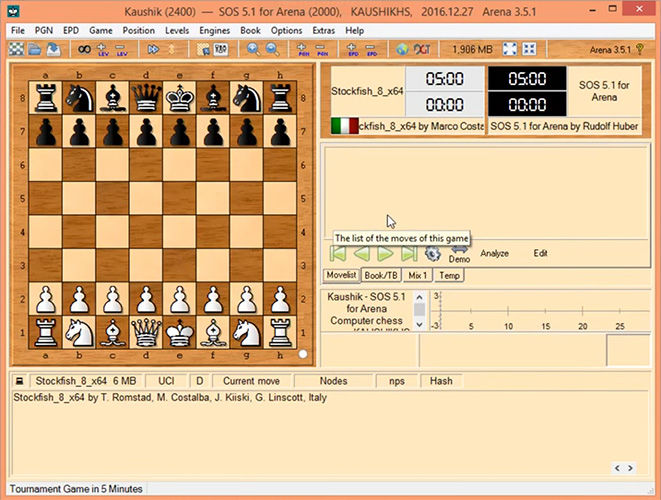
Stockfish takes a wide tree of possibilities and gives them a very basic evaluation. Stockfish analyzes around 1000X more positions per second than LCZero, but the latter has a better evaluation method. Let’s take a look at this screenshot of 300,000 kN/s speed Stockfish and 100 kN/s LCZero (lastest-T60 network) after 1 minute of analysis.Īlthough the suggested lines and evaluation are similar, depth and speed are disparate. If you leave the two engines to work for the same amount of time, you may get the same move suggestions but completely different depth and NPS values. They even require different processors: while Stockfish runs on CPUs, LCZero works best on GPU cores. Stockfish and LCZero are the most popular engines among chess players, but the two engines work very differently. The type of chess position – in openings, for example, where many good moves are available, the depth increases slower.The engine itself (Stockfish, LCZero, Houdini, Komodo, etc.) - see the top chess engines for 2023.The strength of the computer on which the engine is running.The main factors that impact the depth of an engine and the time it takes to reach that depth (known as time-to-depth speedup) include: So the answer to what is considered a good depth can be given only for specific cases. More CPU cores allow chess engines to look into more variations, which helps them increase the credibility of their analysis but slows down their ability to reach higher depths. But although depth is important, it greatly depends on several factors, such as the NPS speed and the computer on which the engine is running.ĭepth 25 on 1 CPU is not the same as depth 25 reached on 8 CPUs. Some players believe that depth is the most important value during engine analysis, so they readily leave their engines running for several hours just to get higher depths. Afterward, it starts increasing very slowly: usually by a single point every few minutes. However, most of the depth is reached in the first minute of engine analysis. And the longer a chess engine analyzes the same position, the higher depth it reaches. This allows the engines to focus on more promising variations and calculate them deeper.īasically, the higher the depth, the better. In order to reach such high depths, engines use a so-called pruning method, during which they cut off a part of variations at lower depths after evaluating them as ineffective.

However, depth 50 does not mean that the engine has checked 50 plies ahead for all possible variations.

A higher depth value usually means better analysis results, but several other factors also go into play.įor example, +1.3 with depth 50 means that after calculating 50 half moves (also referred to as ply/plies), the engine evaluates the given position as significantly better for white.

So a better understanding of its role will help you use your engines more effectively and set the right expectations.ĭepth is a value of chess engine analysis that indicates the number of half moves (a move made by one side) the engine looks ahead. And although this approach is inaccurate since several other equally important factors should be considered, depth is indeed an essential part of engine analysis. For many of them, it is the only indicator of whether they should trust the suggested moves. When chess players start analyzing with engines, depth is usually the first number they look at.


 0 kommentar(er)
0 kommentar(er)
